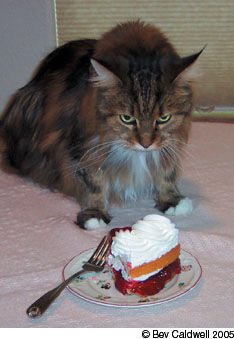Katrina Relief for Animals
In light of the devastation wrought by Hurricane Katrina, many cats, dogs and other companion animals are in desperate need of rescue, shelter and the opportunity to be reunited with their caregivers or find new homes. One of the few organizations in a strong position to provide direct rescue and shelter to displaced animals is the Louisiana State University School of Veterinary Medicine in Baton Rouge. Please consider making a donation to their rescue effort. Make checks payable to the LVMA Dr. Walter J. Ernst Veterinary Memorial Foundation (write “Katrina Fund” on the memo line) and send to the LVMA, 8550 United Plaza Blvd., Suite 1001, Baton Rouge, LA, 70809. They will be able to use these funds quickly. You may designate that your donation be used to care for animals directly, or that it may be used to support the displaced veterinarians who are now in Baton Rouge helping to provide care for stranded animals. For more information, please call toll-free (888) 773-6489 between 8:00 am and 6:00 pm, or you can Email Katrina@ldaf.louisiana.gov. You can also consult the LSU web site directly at: www.vetmed.lsu.edu/#DONATIONS
———-

234
Sweet Tooth, or Not Sweet Tooth
The news that researchers at Philadelphias Monell Chemical Senses Center had discovered the long-dormant sweet tooth gene in cats – and the explanation for why cats are nearly unique in the animal kingdom in having no taste receptors for sugary flavors – raised objections among many cat owners: What about my doughnut-loving cat? And dont forget my cat that loves marshmallows!
According to Monells associate director, Joseph Brand – the author of the report in the Public Library of Sciences online journal, Genetics – there is an explanation for the marshmallow attraction. Whereas humans taste buds have receptors for the five major taste sensations (salty, sour, sweet, bitter and umami, the taste of fermented soy products and MSG), cats have a pseudogene that long ago stopped producing receptors for sweets, Brand notes.
Whatever the cat is eating [marshmallow] for, its not for the sweetness, Dr. Brand explains. Perhaps it likes the texture, or the animal is bored.
At the Cornell Feline Health Center, Dr. Jim Richards (editor of CatWatch) considered the doughnut problem: I think the draw for cats is probably some other flavor, and cats definitely have an attraction to fats.
———-
Recognizing Pain in Pets
Veterinarians are being advised to engage cat owners in the difficult assessment of pain. University of Illinois veterinary researchers Louis-Philippe de Lorimier and Timothy M. Fan put it this way in their Veterinary Medicine (Vol. 100, No. 5) article: One essential component of pain recognition is adequate communication with the owner. Owners know their pets better than anyone else and can recognize abnormal behavior, which is a common and reliable indicator that something is wrong.
Drs. Fan and de Lorimier offer what they call a simplistic rule: If an animal seems to be in pain, then it most likely is.



